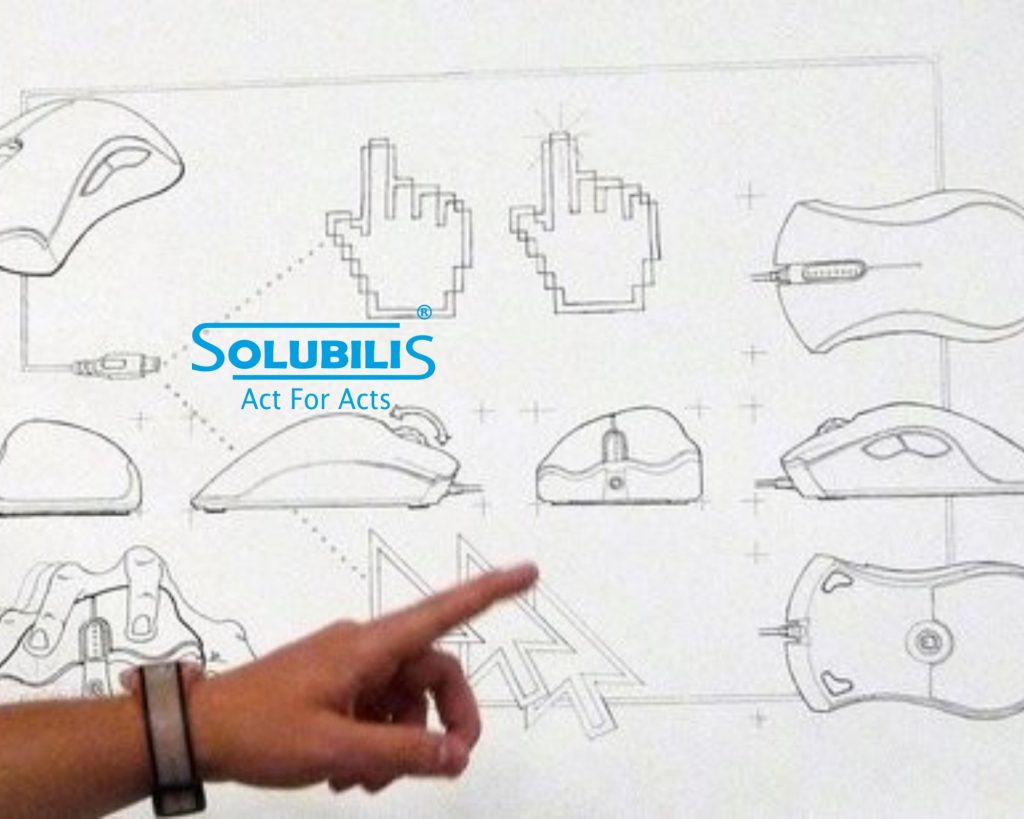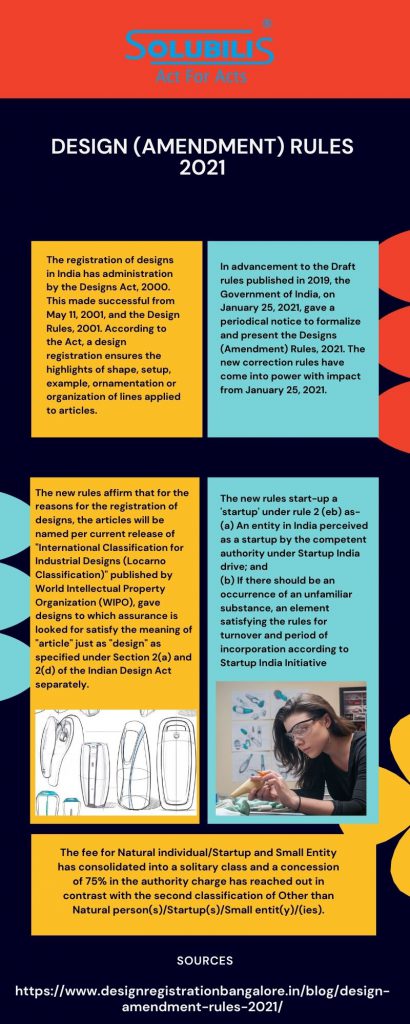TALK TO EXPERTS
The registration of designs in India has administration by the Designs Act, 2000. This made successful from May 11, 2001, and the Design Rules, 2001. According to the Act, a design registration ensures the highlights of shape, setup, example, ornamentation or organization of lines applied to articles.
Since a design registration tries to ensure just the visual allure of a design; it does exclude from its degree any element that is a method of development; or simple mechanical gadget or any imaginative work covered under the Copyright Act or any brand name covered under the Trademarks Act.
Further, each design registration is coordinated to a solitary class of articles [see end note 2], the class being chosen dependent on an order framework gave in the Third timetable of the Act. The characterization framework depends on the International Classification System (Locarno Classification). A design registration exists for an underlying time of a long time from the date of registration, which can be additionally stretched out for a very long time upon demand [see end note 3].
The date of registration is the date of utilization for registration [see end note 4] with the exception of an application that cases need from an application documented beforehand in a show country, in which case the date of registration is the date of recording of the need application
Design (Amendment) rule 2021
In advancement to the Draft rules published in 2019, the Government of India, on January 25, 2021, gave a periodical notice to formalize and present the Designs (Amendment) Rules, 2021. The new correction rules have come into power with impact from January 25, 2021.
Key amendments to the rules are as follows:
Locarno classification of the classifying articles
The new rules affirm that for the reasons for the registration of designs, the articles will be named per current release of “International Classification for Industrial Designs (Locarno Classification)” published by World Intellectual Property Organization (WIPO), gave designs to which assurance is looked for satisfy the meaning of “article” just as “design” as specified under Section 2(a) and 2(d) of the Indian Design Act separately.

Definition of start-up introduced the new rules
The new rules start-up a ‘startup’ under rule 2 (eb) as-
(a) An entity in India perceived as a startup by the competent authority under Startup India drive; and
(b) If there should be an occurrence of an unfamiliar substance, an element satisfying the rules for turnover and period of incorporation according to Startup India Initiative; and submitting statement with that impact.
FEE
The fee for Natural individual/Startup and Small Entity has consolidated into a solitary class and a concession of 75% in the authority charge has reached out in contrast with the second classification of Other than Natural person(s)/Startup(s)/Small entit(y)/(ies).
Existing provisions and forms
- I) The current sub-rule (2e) of Rule 5, of the Indian Design Rules (2001), has revised to peruse as-
– on the off chance that an application prepared by a characteristic individual or startup or little substance has moved to an individual other than a characteristic individual, startup, or little element, the distinction in the size of expenses will have paid by the new candidate with the solicitation for move.
Further, a clarification has embedded with this impact
During the course of the design application if a startup or little substance stops to stay as a startup or little element because of the pass of the period during which it has perceived by the able power, or its turnover accordingly passes the monetary boundary limit as told by the able position,
No distinction in the size of expenses will be payable.
- ii) Formal changes in the necessary types of Form 1 [related to application for registration of design] and Form 24 [related to guaranteeing Small Entity and Start-up status] has been incorporated.
Consequences of submitting false information
- I) The new design rules demonstrate that profiting advantage of decrease in charge based on mistaken data/deception of realities; as to status as a little substance or startup would imply that the whole expense didn’t go with the record, as ordered by rule 5(2)(b). In such a case, as per area 24(2), the recording of the archive will be of no impact except if the expense has been completely paid.
- ii) A design went into the Register of designs by making any bogus idea or bogus portrayal regarding the status as little substance or startup may draw in the arrangements of segment 31 of the Designs Act, 2000 which enable the Controller to cancel or shift any section as he might suspect fit and redress the register as needs be.

FAQ
What is WIPO global design database?
The Global Design Database, an online search tool run by the World Intellectual Property Organization. This is an office of the United Nations that arrangements with IP issues. It contains humongous measures of data in regards to designs that continue to fill on schedule.
What does WIPO global design database contain?
It contains following information.
- Registration under the Hague System for the International Registration of Industrial Designs, which WIPO oversees. Designs from a few public enlistment frameworks, including Canada, Indonesia, Japan, New Zealand, Spain, and the United States of America.
- The online database has an instinctive interface. And offers concurrent pursuits of more than 13, 110, 000 mechanical designs all at once; that have enlistment under the WIPO controlled Hague System. The Global Design Database currently incorporates the public assortment of India with more than 58,000 design models.
Purpose of design protection
Design protection gives on the design holder a selective option to utilize a design – making, offering, putting available, bringing in, sending out, or utilizing the item wherein the design is joined or to which it is applied – and to keep outsiders from utilizing it monetarily without its earlier assent.
What is priority claim?
India is one of the countries gathering to the Paris Convention; so the arrangements for the privilege of need are appropriate. Based on a standard first application recorded in one of the contracting state; the candidate may inside the a half year apply for insurance in other contracting states; last application will have the view as though it had documented around the same time as the main application.
